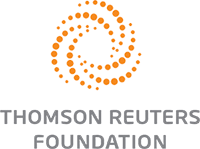Technology and big data are transforming the way we monitor forests and climate in a post-Kyoto world. Static studies have given way to a stream of real-time information used by governments, businesses, and communities to better manage forests for conservation, for economic benefit, and for carbon. Several such ground-breaking new remote-sensing data products related to estimating emissions from deforestation around the world will be launched at COP 20 (featured on Global Forest Watch).
But top-down data from remote sensing can have huge gaps and important limitations. This session aimed to encourage a frank and open discussion about the limitations of remotely sensed and crowd-sourced data and their usefulness. Another important aspect was the question which direction of future data development is needed so that forest monitoring programs are cost-effective and universally accepted.
Top scientists and policy experts presented briefly on the relevance and utility of several data sets that will be unveiled at COP20. These include
- tree cover loss alerts for Peru at 30 meter resolution and 8 day refresh,
- maps of forest plantation areas for key countries,
- and high-resolution maps of emissions from forests and land use change at the tropical and global levels.
Participants were welcome to also discuss other technologies, such as lidar, radar, drones, crowdsourcing. The presentations did not focus on the technical details, but rather on the role and impact of improved data on the REDD+ political process.
The session is linked to the COP20 because the roles of forests and of land use change are a central sticking point in the UNFCCC negations. There is wide disagreement about the rates of forest change, the resulting emissions, and about how countries should monitor, report, and verify their activities. Each of the three data sets launched (and the associated responses) has a direct bearing on these questions. This discussion helped clarify priorities and positions, areas of disagreement, and showcase tools that can be used to help close existing capacity gaps.
Similarly, the Sustainable Development Goals will prioritize improved forest management for better outcomes for people and climate. The data and topics presented demonstratde how we can measure our progress towards the SDGs.
Key questions addressed:
- What are the greatest opportunities for leveraging remotely sensed data to change policy and practice in forest and landscape management?
- What are the weaknesses and limitations of current and forthcoming data sets? Where can they be used and where should they not be used?
- How should scientists, governments, businesses and others prioritize the creation of new data for monitoring greenhouse gas emissions and removals from the AFOLU sector? What standards should be used for data creation and sharing?
Background reading:
High-Resolution Global Maps of 21st-Century Forest Cover Change
Estimated carbon dioxide emissions from tropical deforestation improved by carbon-density maps
Baseline Map of Carbon Emissions from Deforestation in Tropical Regions
RSPO Plantations Publicly Mapped for the First Time, Mongabay.com


















